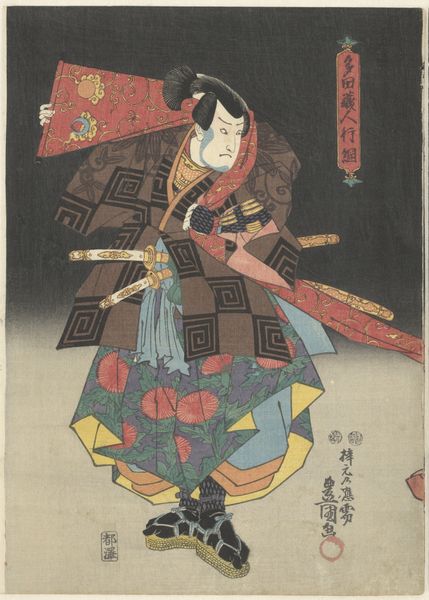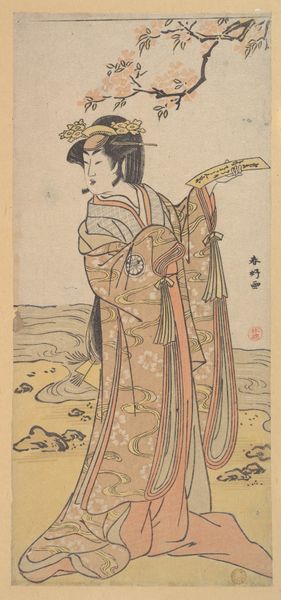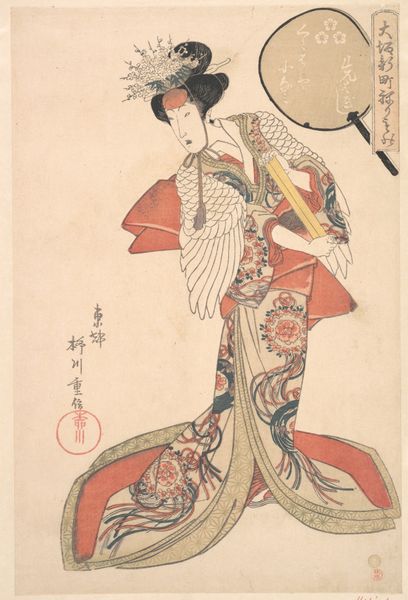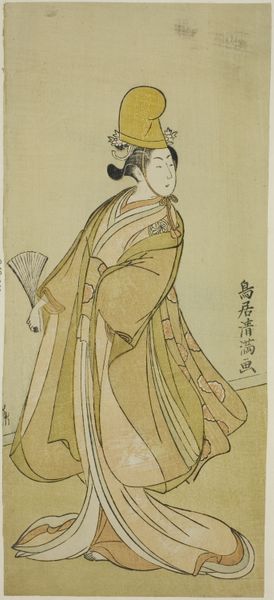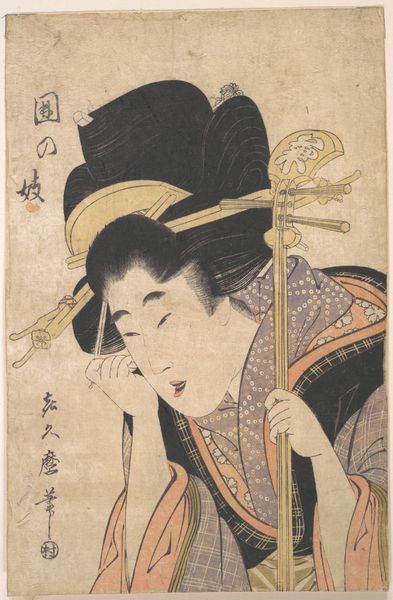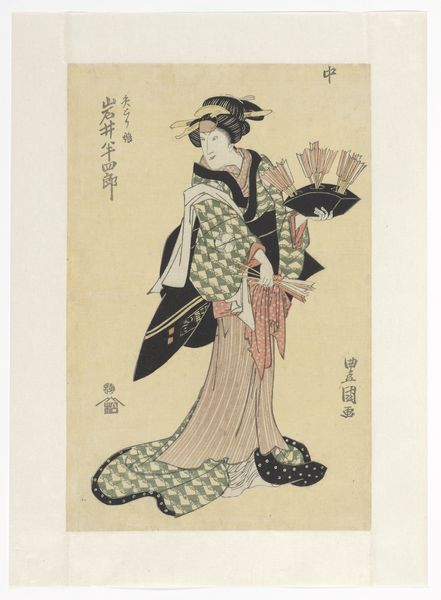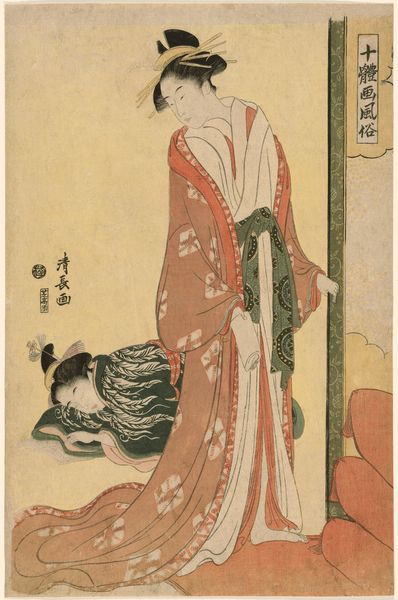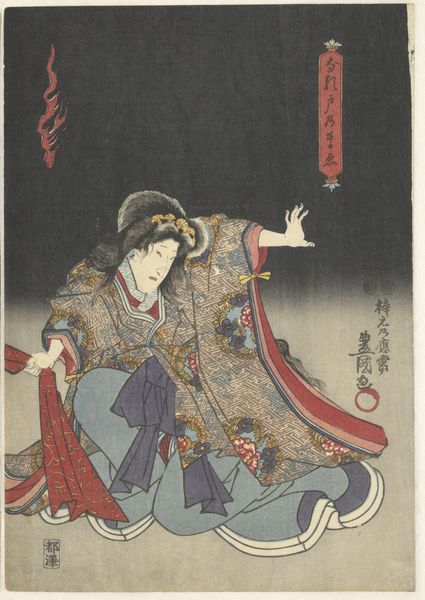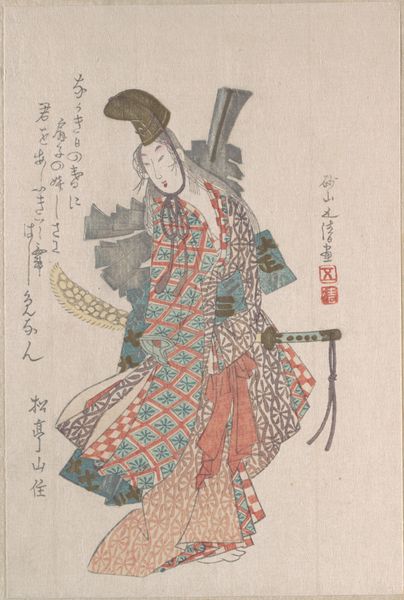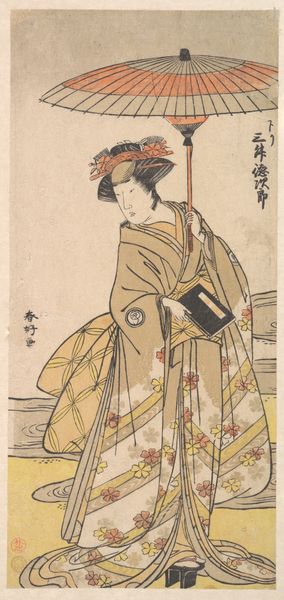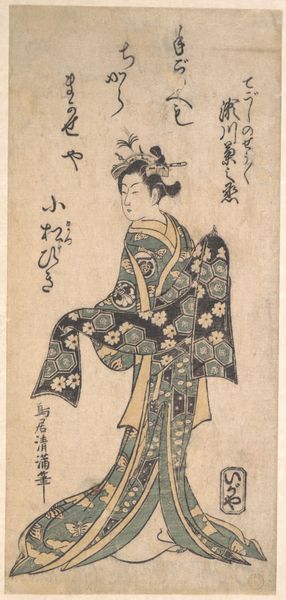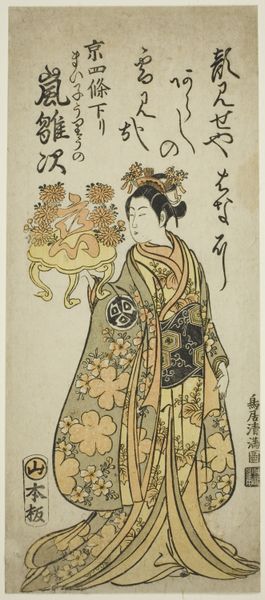
#
portrait
# print
#
ukiyo-e
#
figuration
#
historical fashion
#
watercolor
Dimensions: height 374 mm, width 260 mm
Copyright: Rijks Museum: Open Domain
Utagawa Kunisada created this woodblock print of an actor with a sword, but we don’t know exactly when. Instead of painting for wealthy patrons, artists like Kunisada produced prints for a wider public that enjoyed theater and other forms of popular entertainment. In 19th century Japan, the Tokugawa Shogunate maintained strict social hierarchies and controlled cultural expression through censorship. Prints like this one, depicting Kabuki actors, offered a way to explore themes of rebellion and resistance within the bounds of acceptable entertainment. The actor's intense gaze and weapon imply a moment of high drama, perhaps a heroic stand against injustice. The bare feet could signify vulnerability, strength, or a connection to the earth, depending on the play’s narrative and the viewer’s interpretation. To fully understand this print, we might turn to playbills, theater reviews, and social histories to reconstruct the cultural context in which it was made and viewed. The meaning of art shifts across time and space, and the historian’s role is to trace these changes through careful study.
Comments
No comments
Be the first to comment and join the conversation on the ultimate creative platform.
